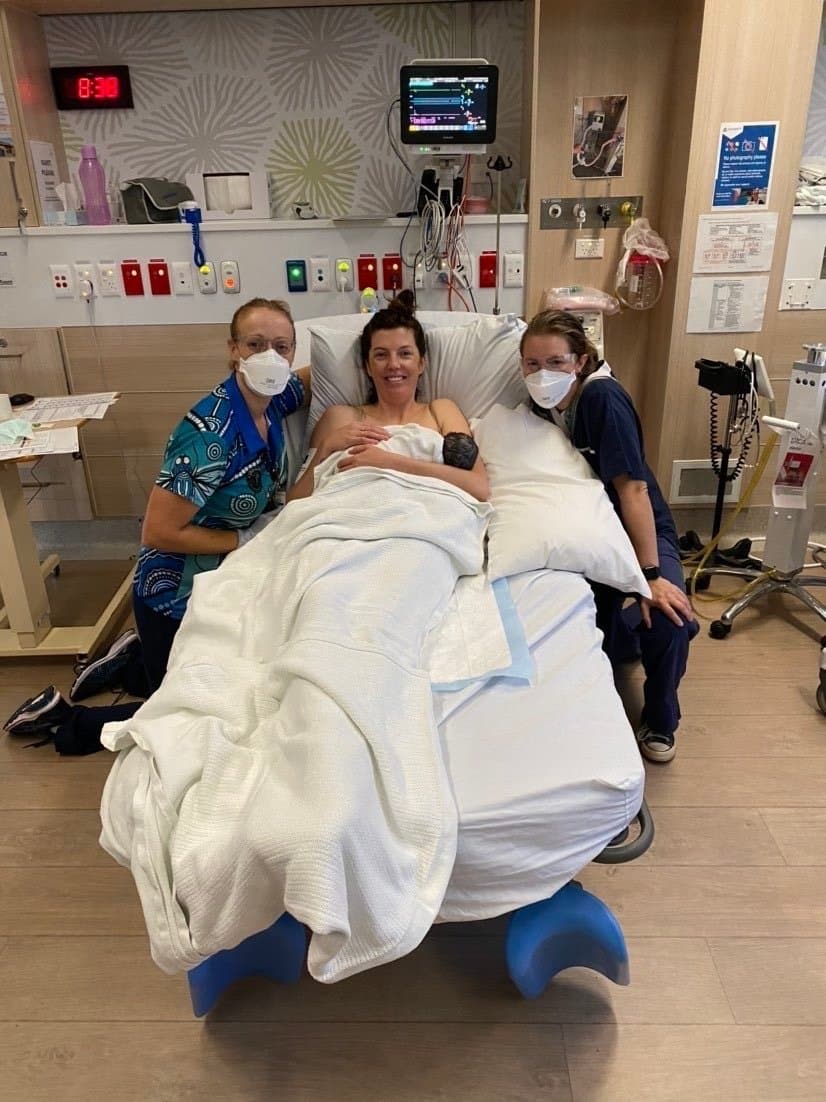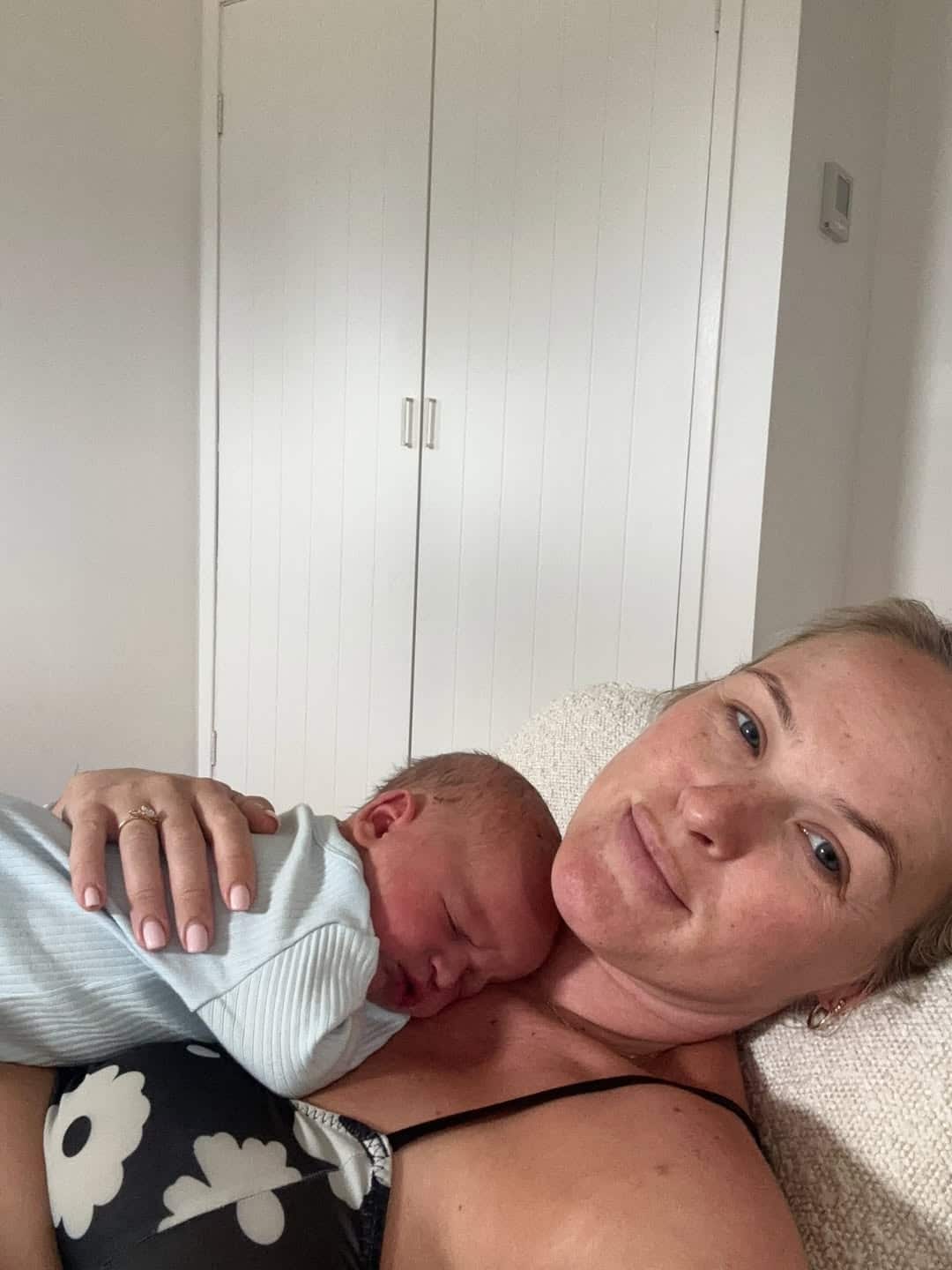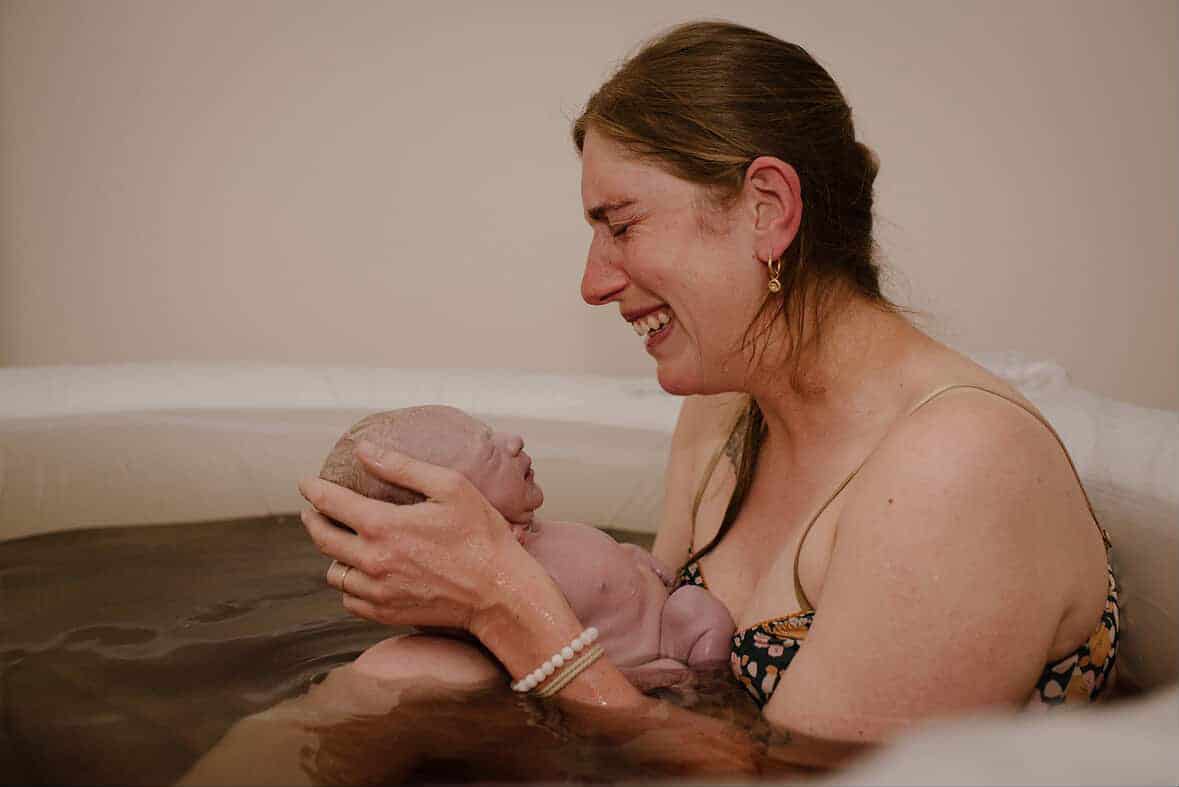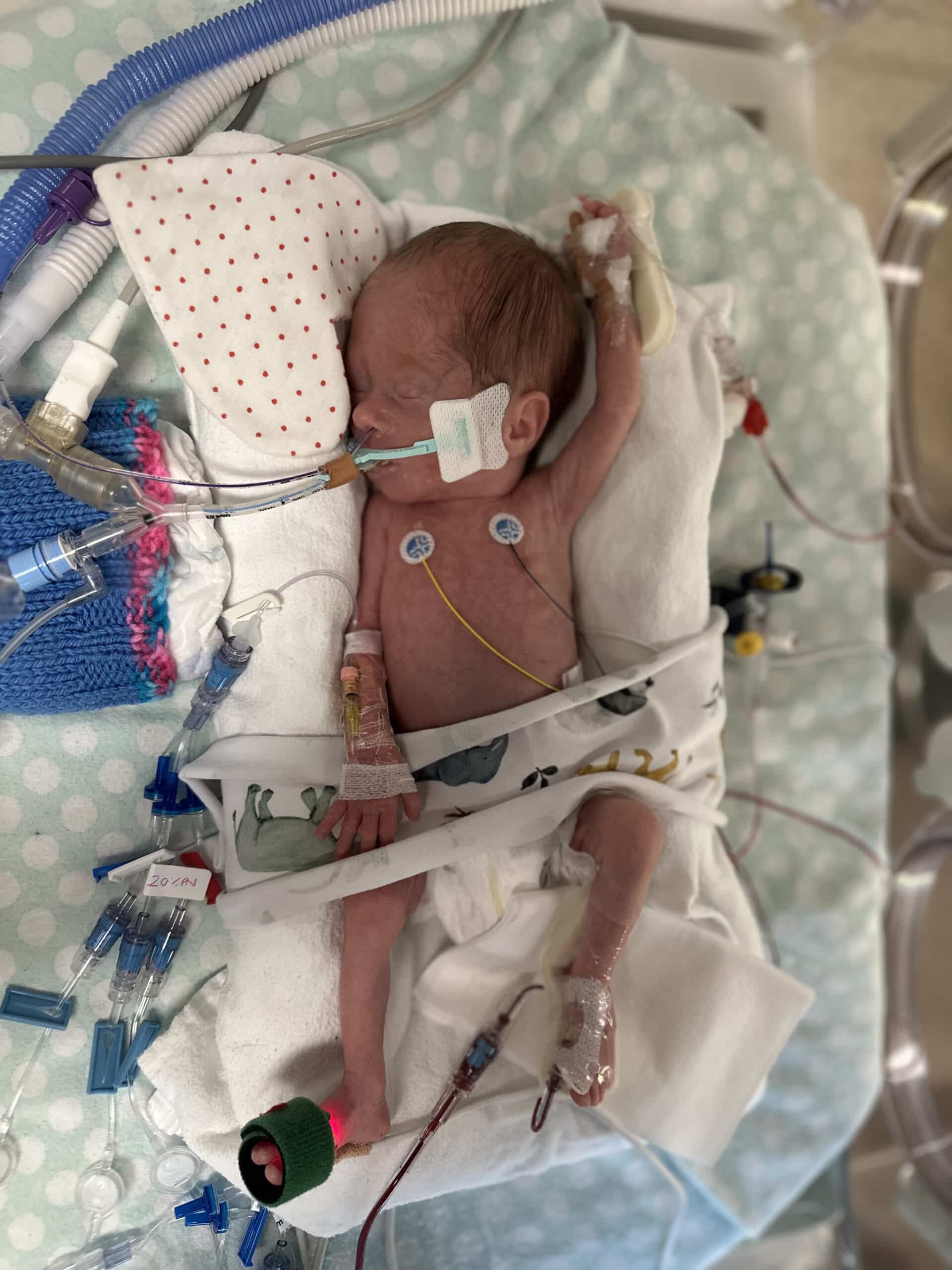Podcasts Gemma
EPISODE 300
Gemma

Gemma lives in a small town in south-west WA so when she fell pregnant she had to make a choice between a rural hospital and a larger one that offered facilities and support if she needed intervention like an epidural or caesarean birth.
“Being my first I was a bit cautious so I wanted to make sure I had all the facilities available to me. My best friend went to Busselton Hospital four months before I was due and she had a wonderful experience so I opted to go there. At my 20 week scan we discovered that I had a low lying scan so they were concerned about placenta previa but a scan at 32 weeks showed that it had moved so I was fine to give birth vaginally.
“I was excited about labour but scared about the unknown. But I feel that knowledge is power and understanding the process of labour and birth definitely put me at ease. I listened to your podcast and learnt so much from the variety of stories.”
Apart from pubic pain and lightening crotch, Gemma had a really straightforward pregnancy. There was a 90 minute drive to the hospital so she had to factor in the travel time when she went into labour. She had a stretch and sweep at 40 weeks and at her next appointment at 41+1, she was booked in for an induction the following day. At 6am the next morning she started having light period cramps so she moved, swayed and breathed through them. She was scared about her induction so despite vomiting throughout the day she was relieved that she had gone into spontaneous labour.
“I told the hospital that I was in early labour at 11am and at 2:30pm I was in the shower and I had a feel inside my vagina and it didn’t feel quite right. We went to hospital and they told me I was 4-6cm and what I was feeling was the bulging amniotic sac. I was so happy with my progress! I spent so much time on the toilet, I liked it for opening up my hips and encouraging the baby to move down. It felt quite natural to sit in that position. By 6pm when the obstetrician arrived I was fully dilated and ready to give birth. I don’t have a great pain threshold but the mantra that the pain was good, healthy pain really helped me. The water in the shower was amazing, too.
“Isla was born at 9:45pm which was quite a while after I was fully dilated. I never got the urge to push and my contractions were three minutes apart and lasting for 45 seconds so there was a lot of space between. When my waters had broken at 4:30 there was meconium in the waters so I needed to wear a wireless monitor, which was fine. At about 9pm they drained my bladder which I think helped me birth her. She cried as soon as she was born and the OB gave her a bit of a rub and cleared her mouth of meconium and mucous and she came straight on my chest.
“I stayed in hospital for four nights and got help with every latch. It was so lovely to be nurtured by the midwives in that way. I think you just take advice from everyone and go with your gut instinct on what feels right for you.”
Gemma fell pregnant easily with her second daughter, Elsie, and her local hospital had started an Midwifery Group Practice (MGP) programme so she opted for that model of care where she saw two midwives throughout her pregnancy. She also had a meeting with her first obstetrician who reassured her that she was in safe hands at her small, rural hospital but she always had the option of travelling to the bigger hospital if intervention was needed.
“I focussed on positive, local birth stories. I did The Birth Class and really liked the episode on the physiology of birth with Rhea Dempsey and the episode on breath and sound with Jodi Wilson. I also listened to Jodi’s episode (HERE) of her four births a few times and learnt so much from what she said, particularly that you don’t need to do labour, you just need to be in it.
“My waters broke at 10pm one night and I was so happy because I was close to 41 weeks and knew that induction wouldn’t be far off. I listened to the yoga nidra relaxation from The Birth Class, made notes about when I went to the toilet because I really didn’t want to have the catheter again, and I started monitoring my contractions about 3am. By 4am I was vomiting and I called my mum. She suggested I call the midwife and she encouraged me to go to hospital…I got there at 6:30am and I was fully dilated.
“I sat on the toilet which again helped to open my hips and I started pushing with contractions. There was one midwife in the MGP program who was trained to oversee a water birth so she was called in and I got in the water about 7am and by 7:19am Elsie was born with the amniotic sac over her face. She was quite purple when she was born, I think because the transition into the water doesn’t create the shock of a birth out of the water. Her cord was pulsating and she eventually pinked up. I got out of the bath to birth the placenta. We headed home six hours after birth.”



Topics Discussed
Public obstetrician, Regional hospital, Two Vaginal Births
Categories
Related Products
-
The Birth Class
108 reviews$249.00The empowering online childbirth education program that will help you confidently prepare for birth.
Join the conversation
Sign up to get the latest updates, freebies, podcast releases straight into your inbox
@AustralianBirthStories
Follow along with us
@AustralianBirthStories
Follow along with us
@AustralianBirthStories
Follow along with us
@AustralianBirthStories
Follow along with us
@AustralianBirthStories
Follow along with us
@AustralianBirthStories
Follow along with us
@AustralianBirthStories
Follow along with us
@AustralianBirthStories
Follow along with us
@AustralianBirthStories
Follow along with us
@AustralianBirthStories
Follow along with us
@AustralianBirthStories
Follow along with us
@AustralianBirthStories
Follow along with us






